- Administrator
- Albums and Singles
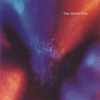 The first part of Andrew McKenzie's unresolved sex trilogy was created as a soundtrack for performance artist Annie Sprinkle's "masturbation ritual," a role that it apparently filled quite successfully.  As a stand-alone effort, however, it is not among McKenzie's most rewarding and enduring works.  The problem is not lack of quality or ideas, but rather that it feels too unnaturally condensed to be truly satisfying.
The first part of Andrew McKenzie's unresolved sex trilogy was created as a soundtrack for performance artist Annie Sprinkle's "masturbation ritual," a role that it apparently filled quite successfully.  As a stand-alone effort, however, it is not among McKenzie's most rewarding and enduring works.  The problem is not lack of quality or ideas, but rather that it feels too unnaturally condensed to be truly satisfying.
I have a difficult time accepting The Hafler Trio as an especially erotic entity and the first half of this 1991 EP does not do much to help me make that leap.  It's still quite good, but it sounds more like vaguely tense ambient drone than anything libidinal.  It begins with an insistently repeating piano note over a sustained bass hum buried low in the mix.  Gradually, a shimmering bit of feedback drifts into the picture and something resembling a processed inhalation/exhalation begins ominously echoing the piano. Around the three minute mark, however, Andrew begins to go for the throat: the bass drone swells dramatically in presence and and a deluge of alternately shrill and spectral noises begin bouncing from speaker to speaker.  The layering quickly becomes impossible to keep track of, as orchestrated chaos erupts and various mechanical sounds cohere into a dense throbbing rhythm that is probably as compelling as anything McKenzie has done.
Unfortunately, that highlight almost immediately segues into the markedly less beguiling lull of the second movement, which sounds like a web of crackling field recordings lazily unfolding over a deep and seismic pulse.  At some point, it begins being buffeted by mutant digitized birds, which is not an especially sexy sound.  That turns out to be a clever feint though, as the conspicuously eroticized final movement eventually evolves from the bass.  The party commences in earnest at the precise moment that the early-Autechre-meets-futuristic-strip-club beat kicks in (supplied by The Anti-Group).  I am surprised that Andrew allows the piece to flirt with IDM as long as he does, but he does ultimately crush it beneath a landslide of dissonant synth, increasingly seismic and overloaded bass, and (most significantly) the breathy sound of Annie experiencing some variety of Tantric orgasm.  Knowing the source of the sounds and their originally intended context distracted me a bit from the full picture at first, which is that the climactic crescendo is an extremely dark one: Masturbatorium ends as a frightening mechanized aural apocalypse.  It must have been quite a memorable show.
Given the provocative title, provocative purpose, and the decidedly immodest album art, the actual music on Masturbatorium is comparatively tame, content to serve as a tense and slowly intensifying backdrop for Sprinkle's live spectacle.  I was a bit wrong-footed by the overt nod to contemporary electronica, but I suppose it is fairly essential to the tone of the piece and the dynamics of the show.  More troubling is the fact that the piece sounds like three separate and truncated pieces oozing into one another.  The transitions aren't clumsy, but the whole feels rushed compositionally–it progresses faster than seems natural.  That may be by necessity though, as I imagine a 45 minute or hour-long masturbation ritual would be pretty demanding.  Nevertheless, I definitely wish the first part had been allowed to unfold longer, as it was becoming an impossibly dense and vibrant monster of a soundscape at the point of its abrupt dissolution.  There are definitely some striking moments, but there are some lulls too and it is all over a bit too quickly.  Fortunately, the next part of the trilogy (Fuck) took the unholy combination of sex and The Hafler Trio to a much higher level.
(Note- this album is currently out of print and likely to remain so for the foreseeable future)
Samples:
 
Read More
- Administrator
- Albums and Singles
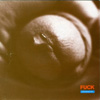 Following logically from the female-centric Masturbatorium, the lengthier and more complex Fuck (1992) shifts the focus to male sexual energy, which manifests itself in considerably more visceral and aggressive music.  Having exclusively heard Andrew's more abstract late-period work before I finally got ahold of this album, I was completely blindsided by its explosive and visceral nature.  I like it– brute force suites The Hafler Trio beautifully.  This album is great.
Following logically from the female-centric Masturbatorium, the lengthier and more complex Fuck (1992) shifts the focus to male sexual energy, which manifests itself in considerably more visceral and aggressive music.  Having exclusively heard Andrew's more abstract late-period work before I finally got ahold of this album, I was completely blindsided by its explosive and visceral nature.  I like it– brute force suites The Hafler Trio beautifully.  This album is great.
Andrew McKenzie does not waste any time with foreplay on Fuck, as the first half blasts into a hot-blooded coital frenzy after a mere 40 seconds of ominous droning.  It isn't an especially abstract or intellectually detached dose of aural sex either–McKenzie could not be more blunt in his attempt to musically approximate an impassioned fuck.  Naturally, such an endeavor has huge potential to be an embarrassing, unintentionally comic fiasco, but Andrew puts on an absolute tour de force and it is absolutely overwhelming (particularly played at maximum volume, as urged in the liner notes).
The backbone of the song is a beat that deftly replicates a rapid heartbeat that grows perceptibly faster and faster as it unfolds/explodes.  That unrelenting pulse gives the piece a very tense feel and a palpable sense of danger, as it sounds like it could all derail into utter chaos at any moment.  A lot of that illusion is also due to the escalating mayhem surrounding it, such as Andrew's rhythmic moans and gasps, the sinister and hollow-sounding roars in the foreground, and the grotesquely amplified cicadas and woodpeckers that seems to be trying to burrow into my goddamn brain.  McKenzie and his fellow mixers (Zbigniew Karkowski and  Hilmar Örn Hilmarsson) completely outdid themselves here–the first part of Fuck bursts from the speakers with singular violence and clarity.
After getting about as crazy as it possibly can, the "lust" half of the album gradually becomes slower and calmer until it is ultimately winnowed down to just Andrew's breathing.  That breathing then segues seamlessly into the album's languid, post-coital second half, which provides a much needed oasis of calm after the savage ear ravishing that preceded it.  It doesn't stay post-coital for long though, as a bass-y processed moan coheres into the slow and persistent rhythm of yet more sex.  It could not be more different than the first half though, augmenting its languorous cadence with only a pleasant shimmer and multiple layers of steady breathing (presumably all Andrew's, though Annie Sprinkle was intimately involved in eliciting the source material for the album).  It all stops without warning in the middle of the piece, leaving only the ambient sounds of the rural night, a sloooow heartbeat, and some haunting distant murmurs.
I am not quite sure what McKenzie was trying to do thematically by ending the piece with such eerie ghost-like moans, though I suspect it represents a slow fade from consciousness into dream.  Regardless, it sounds great and it is a perfect note to end the album on.  Also, the ambiguous shadow it casts at the end of a such a tranquil and organic stretch is naggingly and deliciously mysterious.  I can find absolutely nothing to gripe about here: Fuck is one of the most coherent, striking, and immediately gratifying albums in The Hafler Trio's vast and elusive oeuvre.
(Note- this album is currently out of print.  Also, the third part of The Hafler Trio's improbable trilogy of sex-themed albums ( I Love You) has never been released.)
Samples:
 
Read More
- Administrator
- Albums and Singles
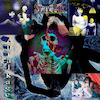 Consistently idiosyncratic, Danny Hyde’s Aural Rage returns with an EP of acidic pop where he combines his trademark production with what could easily be considered mainstream vocals. This is easily the most consistent of his Aural Rage releases, relying less on recycling old samples and ideas by putting greater emphasis on melody and accessibility. Despite Hyde’s focus on approachability, this is still wonderfully mad music reflecting his standpoint between the mainstream and the underground.
Consistently idiosyncratic, Danny Hyde’s Aural Rage returns with an EP of acidic pop where he combines his trademark production with what could easily be considered mainstream vocals. This is easily the most consistent of his Aural Rage releases, relying less on recycling old samples and ideas by putting greater emphasis on melody and accessibility. Despite Hyde’s focus on approachability, this is still wonderfully mad music reflecting his standpoint between the mainstream and the underground.
 
Hyde’s trademark wet and wobbly electronics permeate Svay Pak, these have been a constant part of his work right back from my introduction to him via his remixes of Nine Inch Nails through to his recent albums as Aural Rage. "My Children’s Hearts Are Bleeding" has echoes of the sound he cultivated during his tenure with Coil but with a mix of other influences; a male vocalist brings an earthy pop vibe to the song while a female vocalist sounds like she has been drafted in from one of Ennio Morricone’s more tender scores.
Out of these different strands, pop definitely is the word that comes to mind most throughout Svay Pak. The opening piece "Sky Control" again sees a male vocalist (with a slight hint of the Marc Almonds about him) sing about paranoia and a lack of control over one of the best musical arrangements that Hyde has done in a long time. "Ernio Achieves a Happy End" has a rather dated, '90s feeling to it but I like it, it reminds me of the kind of music I used to listen to that acted as a gateway to the music I listen to today.
I cannot get fully behind all of Svay Pak, the song from which the disc gleans its title from, "Svay Pak Soliloquy," is a bit saccharine for me. It is a pity because the music is of a similar quality to the rest of the EP; the vocalist manages to complement the various layers of the song beautifully but I find the lyrics themselves to be a little clunky. I will probably get over it with more exposure to it and it certainly does not detract from Hyde’s work.
Overall, this is without a doubt the strongest of Hyde’s releases under the Aural Rage name. While I liked the previous CDs, they were a touch ponderous and could have done with little trimming. Svay Pak on the other hand sees Hyde being increasingly selective with his work and it is paying off handsomely. This is obviously a labor of love for him as attested by his dedication to creating individual artwork for each copy of this release (right down to a special Brainwashed review sleeve).
samples:
 
Read More
- Administrator
- Albums and Singles
 There's a mix of joy and sadness for me when it comes to releases such as this. On one hand, there's an archeological fascination of seeing and hearing a band’s entire output compiled into a single release. However, there's also the slightly depressing realization that their hours of blood and sweat and trying to "make it" can be so succinctly collected. In this case, an entire career of unsung, aggressively sharp post-punk is tightly compiled into this lovingly packaged collection.
There's a mix of joy and sadness for me when it comes to releases such as this. On one hand, there's an archeological fascination of seeing and hearing a band’s entire output compiled into a single release. However, there's also the slightly depressing realization that their hours of blood and sweat and trying to "make it" can be so succinctly collected. In this case, an entire career of unsung, aggressively sharp post-punk is tightly compiled into this lovingly packaged collection.
In their four year career, the trio of drummer Daryl Amos, bassist Jason Sherwin, and vocalist/guitarist Tony Sampson, never managed to even put out a full album, though most of the pieces for one were recorded.Instead there was a limited 7" and cassette EP that found their way out.All of that material appears here, along with a few unreleased studio recordings and live tracks of not stellar, but better-than-expected quality.
Taming the Outback's sound feels of the era:not dated, but there is a certain sense of epicness that early Echo and the Bunnymen and U2 traded in.Lots of big echos and reverbs that make even the slightest guitar sound a massive production.That, paired with a taut rhythmic section that is reminiscent of Killing Joke’s mid period career.
"Fire & Smoke," the A side of their only 7" exemplifies this, with prominent bass rhythms and rapid drums alongside expansive guitar notes and punctuated with piano.The other track from that release, "Blue Heart" is of similar construction, but has a slower, more dour tone throughout.
"Mistrust" or "Eight-Hour King" both have guitar and drum passages that definitely made me think of U2's Boy (which isn't a bad thing), but with more of a sense of aggression rather than stadium grandstanding."No Soul to Bare," on the other hand, feels far more immediate and energetic, even through the less than polished production (it is essentially a live in the studio demo).
The unreleased live tracks vary in quality, but are all listenable."Devil's Calling" could pass for a studio demo, with its clear production and distinct instrument sounds."Wild," on the other hand, has that muffled, fluttering cassette tape sound to it that detracts, but also adds a little bit of nostalgia for anyone who ever enjoyed a multiple-generation analog bootleg.
In retrospect, I don't know how the band’s career would have panned out had they existed longer.A controversial gig flier depicting the band crucified in a field (reproduced on the cover to this disc) that was likely part artistic statement and part publicity stunt didn't really help the band publicly, and was probably one of the first nails in their coffin.
I say I'm not sure because I can't declare that this is some lost diamond in the rough or anything.It's a very well done and memorable post-punk collection that fans of the genre, such as myself wouldenjoy.It isn't, however, some sort of revelatory piece of art that will change the universe with this greater level of recognition, but it doesn't need to be.
samples:
 
Read More
- Administrator
- Albums and Singles
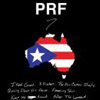 Cut from a similar cloth as the previous single and EP, the first full fledged album from Puerto Rico Flowers doesn’t take any drastic leaps in style, but instead is a more developed, refined version of the former Clockcleaner vocalist John Sharkey III's modern goth pop project that perfectly balances nostalgia and modernism, and has been doing a good job of getting stuck in my head ever since I first heard it.
Cut from a similar cloth as the previous single and EP, the first full fledged album from Puerto Rico Flowers doesn’t take any drastic leaps in style, but instead is a more developed, refined version of the former Clockcleaner vocalist John Sharkey III's modern goth pop project that perfectly balances nostalgia and modernism, and has been doing a good job of getting stuck in my head ever since I first heard it.
Much has been discussed of how seemingly drastic of a shift Puerto Rico Flowers is from Clockcleaner, but I don't see it as such a drastic leap.Sharkey's other project always had an underlying post-punk, pop-infused current that was intentionally obscured by the absurdist machismo grandstanding and snarky humor.Clockcleaner always sounded like it would be perfect in a dingy bar that reeks of stale beer and staler piss, but without that ambience, PRF would sound rather similar I think.
These seven songs maintain a similar pace, mostly lead by distorted bass and synths and thus have a consistent feel (consistent, but not overly similar to one another).Opener "I Feel Good" instantly reminded me of the plodding, pounding beats of the first Killing Joke album, which was even further enhanced with the trademark over-driven bass rhythms.However, the synth work pushes it into a different realm of bleak.
Again, there's definite parallels with other artists to be heard, but never does it feel like a direct rip-off of anyone.For one, Sharkey's voice has pretty much locked in to a Dave Gahan model with hints of Ian Curtis.Some of the individual songs too feel almost like tributes:the slow drum programming and bass lead of "Freezing Tears" instantly reminded me of the Sisters of Mercy cover of "Emma," but without the cock rock grandstanding and pseudo-ironic pretense.
One of the biggest leaps on this album is definitely Sharkey’s vocals.While it still retains the expected death rock monotone sound throughout, there’s more actual "singing" going on all around, whichprevents monotony from setting in.The aforementioned "I Feel Good" for example, shows a wide range, sonically and emotionally, making it a personal favorite song.
This variety leads to an almost pop sensibility in the sense that the songs become quite catchy and memorable, which an achievement for a project that is heavily focused on mantra-like repetition.The distinct verse/chorus/verse structure of "3 Sisters" for example, lends a extravagant, almost anthemic quality to it that makes it quite memorable."Keep Me Around," with all its lyrical smugness, is the closest thing to an up-tempo number here: a more brisk pace, catchy chorus and extra guitar, courtesy of Kurt Vile, flesh it out quite well.Closer "After the Weekend" also goes in a drastically different direction, ignoring the drums and just meshing the vocals with a slow, funeral paced synth line and sparse piano.
I mentioned in my first PRF review last year that I felt some common ground between the band and Cold Cave and, considering the spectacle that is Cherish the Light Years, the two projects are taking very divergent paths.While I loved the Cold Cave album too, 7 is more natural and organic, not focusing on epic production and dramatic effects and instead excels on the strength of the songwriting and arrangements alone.It does everything a debut full length album should:it retains the raw freshness of the earlier singles but in a more polished, developed way that makes it one of my favorite albums this year.
samples:
 
Read More
- Administrator
- Albums and Singles
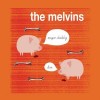
The Melvins are a touring machine; I have been fortunate enough to see them play four or five times during the last decade. They have also put their shows to tape on nearly a dozen releases. While many of those recordings are not top-shelf quality, this new release is the best document of the Melvins live experience to date.
The 13 songs on Sugar Daddy Live, while recorded at an undisclosed time, seems to predate the Melvins' most recent studio full-length, The Bride Screamed Murder, which was a bit of a mixed bag. Instead, the band kicks off the show with three punchy songs from 2008's Nude with Boots, sticking to recent material for most of the setlist. "Civilized Worm," from 2006's utterly fantastic A Senile Animal, is an early highlight, its lockstep rhythm and easy-to-shout-along-to verses suiting the Melvins' playing—raucous, upbeat, forceful playing, a slight increase in tempo, and lots of crunch.
Since 2006, Jared Warren and Coady Willis, founding members and lynchpins in Big Business, have also served as full-time members of the Melvins—a combination that has not only resulted in a late-career spark and several great albums, but their most powerful live lineup to date. I'm sure Melvins know this, of course, as they keep the emphasis squarely on material made with their current line-up. As the show moves along, they do dip into their back catalog a couple times—first for a nine-minute version of "Eye Flys," the lead track from 1987's debut Gluey Porch Treatments, then for "Tipping the Lion," from 1996's difficult Stag. Those two cuts aside, the band draws all the other songs in the main set from A Senile Animal and Nude with Boots.
In keeping with the Melvins' odd sense of humor, the encore starts off with straight-faced, and therefore subtly bizarre, reading of "The Star Spangled Banner." Naturally, this segues into a 12-minute, feedback-laden version of fan favorite (and namesake of one of metal's most chameleonic, yet very clearly Melvins-indebted, bands) "Boris." That song opens its parent album, 1991's inimitable Bullhead, serving as a swampy, smacked-out lead-in to a half-hour sludgefest. Here, it closes a joyous, energetic live show just as effectively.
It is apparent, from the enthusiasm on display, that Buzz Osborne and Dale Crover still get a kick out of playing together and aren't just going through the motions. Coupled with their revamped line-up and song selection, Sugar Daddy Live is the Melvins' best live document. These songs hold their own with anything in the band's back catalog, drawn from their most inspired albums since their mid-'90s winning streak—Houdini, Stoner Witch, and Stag—as uncompromising a run as I have heard on a major label. That's a high compliment to A Senile Animal and Nude with Boots: unlike most bands their age, Melvins are making vital albums a quarter-century into their career. By the evidence on Sugar Daddy Live, they remain committed to totally killing it on the live circuit, too.
Samples:
Read More
- Administrator
- Albums and Singles
 Bureau B is a boutique label that, in between new releases, has been tirelessly reissuing little-known albums from the German experimental music realm since 2007. Its most recent selection is Hans-Joachim Roedelius' 1987 solo piano album, Momenti Felici, which I have had on repeat since finally hearing it 24 years after release.
Bureau B is a boutique label that, in between new releases, has been tirelessly reissuing little-known albums from the German experimental music realm since 2007. Its most recent selection is Hans-Joachim Roedelius' 1987 solo piano album, Momenti Felici, which I have had on repeat since finally hearing it 24 years after release.
Momenti Felici opens with "Im Frühtau," which utilizes a two-note pulse derived from krautrock, then overlays resonant piano chords and synthesizer tones. Unlike most of his work with Cluster, Eno and Harmonia, though, it is Roedelius' piano playing that forms the album's backbone. He hangs onto a somber, reflective tone throughout the album, but also paints with a colorful palette. The rich saxophone playing on "Guten Morgen" and "Pas De Deux," courtesy of Alexander Czjzek, is a treat, swelling to fill out the empty space between piano chords. The sprawling ambient drift of "Über Den Wolken," on the other hand, is deeply immersive—and, amazingly, was put to tape a decade before Stars of the Lid would begin to explore similar territory.
Roedelius is equally engaging when he allows his piano playing to shine without accompaniment. He generally plays with more force when he is not competing for space, as on the rollicking descent of chords on "Aufgewacht" or the incisive, rhythmic "Anima Mundi." With the passion Roedelius fires up on these solo tracks, I can envision him under a spotlight on stage, sitting at his grand piano, focused yet full of energy, doing his best to wow those who showed up to hear him that evening.
Once the album winds to a close, Bureau B has included three previously unheard tracks on which Roedelius' piano becomes a touch more contemplative. The standout is the second piece, "Vor Ohren"—I'm not sure what sort of electroacoustic instruments Roedelius has chosen alongside his piano, but the juxtaposition is momentous, electric, and unlike anything on Momenti Felici. Bonus tracks aside, Bureau B has done the album justice with this reissue: the production is sharp, detailed and full of life, and the original artwork is handsomely replicated for a new generation of listeners.
Momenti Felici is by no means Roedelius' most challenging or avant-garde work, nor necessarily his most inventive. Unfortunately, his solo recordings are hardly mentioned alongside his stone-cold classics with Cluster and Harmonia. Perhaps it's time for a broad reevaluation: after over a decade of immersing myself in his better-known classics, I have found myself blindsided by this album—and eager to dig into Roedelius' solo catalog.
Samples:
Read More
- Administrator
- Albums and Singles
Natural Snow Buildings released a "surprise" album made specifically for Record Store Day. Details are below.

Brand new full length CD album from Natural Snow Buildings, made especially for Record Store Day. Following on from January 2011′s “Waves of the Random Sea”, this is the most recent recording from the duo of Mehdi and Solange, recorded over the first three months of 2011.
Epicly dark and brooding folk blurred with psychedelic and ritualistic overtones, this album sounds as good as any other Natural Snow Buildings / Twinsistermoon / Isengrind release, retaining the sound that only this duo can conjure up.
Opener “Chants of Niflheim Part 1″ is a dark reflection upon the concept of its title, followed by “Templars Ritual”, a psychedelic meandering 17 minutes of ritual head nodding zone outs. “Chants Of Niflheim Part 2″ builds ethereal levitation to new forms, from dark to light, blurring heavy riffs with almost vocal instrument sounds to create a mist of unknown. Album closer, “H. Scudder”, opens with Mehdi’s softly sung lyrics layered with percussion and string, heading straight into a deep ritualistic swirling drone section.
“Chants of Niflheim” again concretes Natural Snow Buildings as an essential contemporary duo, crossing the lines of folk drone experimentalism, traditional folk craftsmanship and post rock aesthetic. Again, another essential disc from this French duo.
Limited to 500 copies in full colour 4 panel card sleeves.
Tracks Are :
- Chants Of Niflheim Part I
- Templars Ritual
- Chants Of Niflheim Part II
- H. Scudder
Released on Blackest Rainbow Records, but not available through them.
Read More
- Creaig Dunton
- Albums and Singles
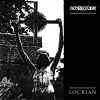
As my reviews of both of these projects over the past few years surely indicates, these are two of my favorite artists working in the post-post metal field, approaching the genre from a conceptual, almost academic mindset rather than a traditionalist one. It was perfectly logical for them to work together, and this 7" makes for a tantalizing teaser for their upcoming collaborative EP.
Locrian has, to me, always been more about the examination of metal in all its facets:rather than working with headbanging riffs or pounding drums, their work has been a careful deconstruction, focusing on the subtle melodies and ambiences that are so often obscured within the genre."In The Absence of Light" at first feels like their earliest work: a deep, submarine guitar chug from Andre Foisy that has a more simplistic, drone type quality to it.That is until Terence Hannum’s synths come in, a soft, almost ambient series of meditative notes that clashes with the grinding chaos.Once the echoing, monastic vocals arrive, the whole song takes on a liturgical quality, simultaneously pious and blasphemous, and coming together beautifully.
Jenks Miller's Horseback project, on the flip side, is a bit different than what I had expected to hear.Horseback is usually all about the riff: slow, pounding guitar passages that become hypnotic in their repetition.On "Oblivion Eaters," however, he’s dabbling in layered, rapid arpeggios and what sounds like expansive keyboards buried deep under them.The varying layers synthesize into an almost melodic underpinning with dense clusters of guitar noise blasting away.Miller’s vocals are once again heavily treated and effected to become another instrument in the dense mix.
The two sides compliment each other nicely, shaping the traditional signifiers of heavy metal into distinct, but consistent compositions.Considering this is the work of the two projects independent of one another, I have high hopes for the upcoming New Dominions collaboration of the two.
 
Read More
- Administrator
- Albums and Singles
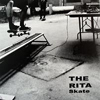
Sam McKinlay's work as The Rita is almost synonymous with the Harsh Noise Walls (HNW) within the noise community. In contrast to the ever changing and eclectic work of artists like Wolf Eyes and Prurient, the HNW adherents are all about worshiping the stagnant mass of barely changing static and white noise that old school artists like CCCC and the Incapacitants created. This LP surprised me with the amount of variation and depth that it actually has, considering what I was expecting.
While I like a good brutal blast of noise here and there, I tend to prefer stuff that has a distinct style or approach.Much of the HNW stuff I've heard simply sounds like the critique often delivered against any noise music:it simply sounds like a broken AM radio playing through a distortion pedal.However, McKinlay's approach to this is much more nuanced and diverse, and while it meets that impenetrable wall of noise criteria for the genre, there’s more going on besides that.
Never one to hide his interests or source material, "Skate" is based on the source recordings of McKinlay skating on a mic'd up metal rail.Immediately upon its introduction, there’s the obvious clack of a skateboard hitting a rail, discernible through the miasma of white noise.As it progresses, the heavy, thick layers of feedback and static occasionally part, allowing the obvious, raw recordings of skateboarding to be heard within, serving as some sort of perverse rhythmic breakdown to the otherwise concrete wall.
The other side, "Snorkel," is constructed from samples of snorkeling and scuba diving from various horror and adventure films.While the source material is never completely apparent, there's a vibe of an old, worn VHS tape with tracking issues throughout:crackling, hissy sound alongside the harsh, brittle noise.While there are no obvious breaks in the sound—as is found on "Skate"—there is a slow, but obvious progression and shift throughout, giving it much more depth than it seems.
There's no chance this LP would appeal to anyone who can't tell the difference between Merzbow and Masonna, but as someone who usually has little interest in the wall noise approach, I found both sides far more captivating than I had expected.The variation and nuance is quite subtle, but definitely there.
samples:
 
Read More
- Administrator
- Albums and Singles
 At one time, it would have been unthinkable for a band renowned for their unrelenting volume, chaos and atonality to release an album with this title. However, Neubauten's modus operandi has always been to confound expectations and even after a decade of softening their sound, Silence is Sexy certainly confounded many listeners at the time. Looking back at it now, it is easy to look at it as the start of a new phase in the group’s development. It has certainly lost little of its potency in the last ten years.
At one time, it would have been unthinkable for a band renowned for their unrelenting volume, chaos and atonality to release an album with this title. However, Neubauten's modus operandi has always been to confound expectations and even after a decade of softening their sound, Silence is Sexy certainly confounded many listeners at the time. Looking back at it now, it is easy to look at it as the start of a new phase in the group’s development. It has certainly lost little of its potency in the last ten years.
From the moment "Sabrina" begins, Silence is Sexy casts its spell on me. Blixa Bargeld’s lyrics cycle through the colors of the German flag and the rest of the band keep a tight rein on the volume; exploring the texture and melodic capabilities of their chosen instruments. These themes run through Silence is Sexy in various forms, creating a solid conceptual backbone for the album. This was the sound of a new Neubauten (Jochen Arbeit and Rudolf Moser both had joined since Ende Neu) and represented a testing of the waters for the various players.
Later in the album, the superb "Die Befindlichkeit des Landes" sees Bargeld ruminating on the state of post-unification Germany, particularly the sense of displacement caused by new construction and the downplaying of history (the name chosen by the band way back in 1980 having a different resonance at the turn of the millennium). He plays on the irony of perhaps Germany’s most famous singer, Marlene Dietrich, commemorated by a tiny square in the Potsdamer area of Berlin. The idea of a new state brought about by the joining of two separate halfs of a city could be seen as a metaphor for the loss of the band’s past (through the loss of F.M. Einheit and Mark Chung) and looking to the future, the what ifs of the latest line up of the group.
The idea of silence and restraint also comes to a head at several points throughout the album. The title track deals with John Cage’s idea of the impossibility of silence all limited to the time it takes to smoke a cigarette. Pregnant pauses and a loping bass line give way to Jochen Arbeit’s "tinnitus guitar" which reinforces Cage’s epiphany in an anechoic chamber that no matter how quiet the environment becomes, some sort of sound will always pervade. Interestingly, the old cliché of the notes they are not playing being important; "Silence is Sexy" was built around Bargeld’s piano but the instrument was edited out in its final presentation.
Towards the end of the album, one of Neubauten’s best songs emerge in the form of "Sonnenbarke." The song is a stunning voyage on a mythical sun barge, full of cosmic splendor. With alchemical grace, Bargeld transforms the November grey of Berlin into a creative journey through a golden, eternal light. The power of the lyrics resonates into the music where Moser’s use of a jet engine as percussive instrument creates a shining, shimmering constellation of tones (and of course the idea of voyage across the sky is semantically linked to the jet engine itself).
This reissue of Silence is Sexy makes some alterations to the format and tracklisting of the album. Firstly, the second disc featuring "Pelikanol" is completely absent leaving Silence is Sexy as a single disc album. Secondly, the main disc follows the original German tracklisting of the album, which replaces "Total Eclipse of the Sun" with "Anrufe in Abwesenheit." Personally, I always preferred the latter to the former (which was available on the international edition of Strategies Against Architecture III) as it fit better with the concepts and music found elsewhere on Silence is Sexy. So for anyone who already owns the album, there is little here to warrant buying it again (unless you want a set of Neubauten branded matches, which are given as a bonus when buying from the band’s website) but for those who have yet to sample this entry in Neubauten’s back catalogue, I heartily recommend it but would suggest tracking down the older two-disc version instead for the definitive experience.
samples:
 
Read More


